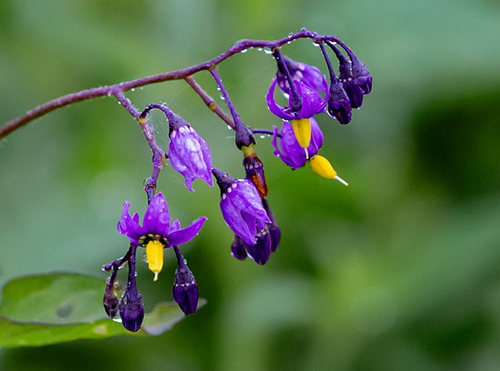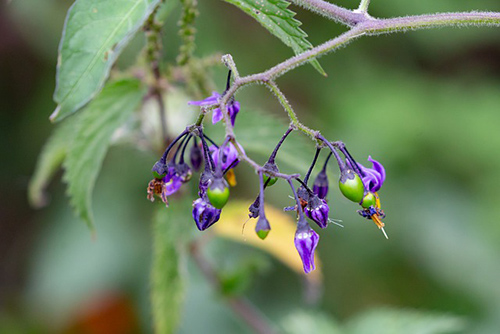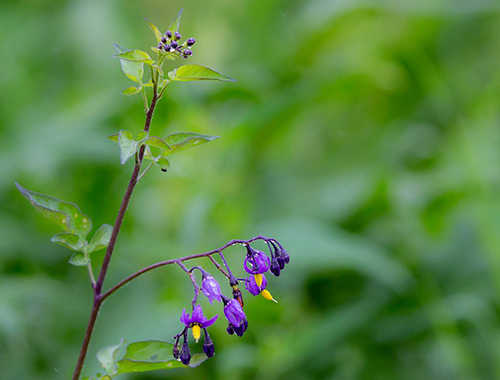Contents
The name bittersweet nightshade is directly linked to the taste of its berries, first sweet, then bitter. The same happens to its properties, which possess a mixture of toxic and medicinal.

Bittersweet Nightshade Scientific Facts
- Other names: Climbing nightshade, bittersweet, bittersweet herb, bittersweet stems, bittersweet twigs, blue nightshade, felonwort, fever twig, garden nightshade, nightshade, nightshade vine, scarlet berry, staff vine, violet bloom, woody, woody nightshade.
- French: Douce-amere.
- Spanish: Dulcamara.
- Environment: Cool, damp valleys all over Europe and warm areas of America.
- Description: Vivacious plant of the Solanaceae family, growing from 60 to 150 cm high. Its flowers have five violet petals and yellow anthers. The fruit is first green, then red berries.
- Parts of the plant used medicinally: The stems, the leaves, and the berries.
Healing Properties and Warning

The entire plant contains diverse toxic alkaloids, similar to solanine (solaceine and solaneine, for instance). Moreover, the plant is rich in tannin and saponins. It has diuretic, depurative, expectorant, and slightly narcotic properties. It was used to treat chronic bronchitis and asthma in the past centuries. However, because of its toxic effects, it is only used externally.

When applied to the skin, it presents emollient and cicatrizant properties. It renders good results for breast inflammation (mastitis), infected ulcers and wounds, and any eczema in breastfeeding women. In insect bites, a certain degree of easing is obtained by rubbing some berries of this plant on the bite area.
WARNING! When taken orally, the whole plant, especially its berries, is toxic, though not deadly poisonous. Its consumption produces vomiting, diarrhea, and nervous disorders.
How to use Bittersweet Nightshade
- Poultices with a decoction made with 100g of leaves per 250 ml of water. Flour can be added until a paste is obtained. Apply on the affected area for 15 minutes, three times a day.
- Compresses soaked in the liquid of this decoction. Apply during the same time and with the same frequency.
DISCLAIMER: All content on this website is presented solely for educational and informational objectives. It would be best to not rely on the information provided as a replacement for advice, diagnosis, or treatment from a qualified medical expert. If you are pregnant, nursing, or have any preexisting medical concerns, you should talk to your doctor before using any herbal or natural medicines.
REFERENCES
- George D. Pamplona-Roger, M.D. “Encyclopedia of Medicinal Plants.” George D. Pamplona-Roger, M.D. Encyclopedia of Medicinal Plants. Ed. Francesc X. Gelabert. vols. 2 San Fernando de Henares: Editorial Safeliz, 2000. 728. Print.
